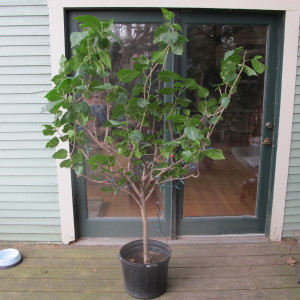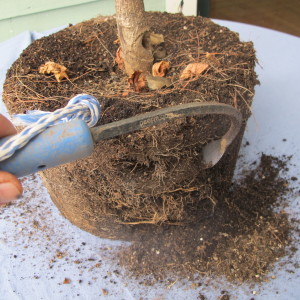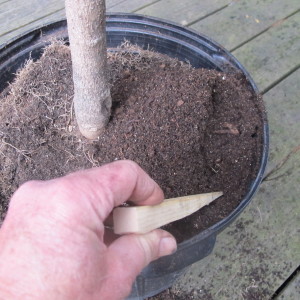It’s Time to Re-Pot Many Houseplants
Plants are smarter than you think. It’s true that most have a hard time remembering their nine-times tables, and are darned if they know the capitol of Nebraska (though even I might need help from Mrs. Google on that). But, for example, they know spring is on the way – even if they haven’t been outside.
When spring arrives the sun coming in the window is stronger, days are longer, and plant roots are growing. Plants know it’s time for some special care – bigger pots and more water. If you haven’t repotted any houseplants in recent years, you might want to do so now.
There are two schools of re-potting. Some good growers say, “don’t mess with the roots. Just put the plant into the next bigger sized pot, and let its roots find their way into new soil”. The other school of growers say, “tease out the roots and cut them back to encourage them to divide and grow new roots”. I’m in the second school. Especially for large plants that are already in big pots.
I have a hibiscus plant, a small tree, really, that was given to me more than a decade ago. It came in a cheap plastic pot about 14 inches in diameter, and a foot or so deep. Up until very recently it’s been in that same pot. The plant is 6 feet tall, decorated with lights, and blooms regularly – and has for years. This winter blossoms were scarce, so I decided that it was time to give it some new soil, compost and fertilizer.
Over the years my hibiscus has lost a lot of soil – until I re-potted it, the soil surface was 4 inches below the top edge of the pot. Some washed out with watering. Some was taken up by the plant. And some organic matter just oxidized and disappeared. That’s right, organic matter in soil can “burn up” and disappear with time –whether in your garden or in a pot. It’s why adding compost to the soil every year is standard practice in the vegetable garden.
Some big indoor plants develop big, fat roots that encircle the pot if not re-potted. When re-potting those, I get out my root knife or scissors and cut back the roots. Not so this one. It has small, fibrous roots. I teased out the roots with my CobraHead weeding tool and tickled them loose with my fingers. I let the tired old soil fall away.
To re-pot that hibiscus, I slid it out of the pot and placed it on an outdoor table on an old sheet. I removed about half an inch of soil all around the root ball, and even more on the bottom. I cut back the few long roots I came across. Then I measured the root ball. It was just 8 inches from top to bottom. My pot is 12 inches deep, and I wanted an inch of free space at the top. So I added 3 inches of “soil” to the bottom of the pot and gently packed it down.
The soil mix I used was a 50-50 mix of peat-based commercial potting mix and a fluffy light compost I buy by the truckload for my outdoor gardens. I ended up using12 quarts of this mix. I added about a cup of Pro-Gro brand organic, slow-release fertilizer to the bucket of planting mix. And I added half a cup of green sand, a naturally-occurring product that contains potassium and lots of trace minerals. It is mined in New Jersey from what was once an undersea deposit.
After teasing out the roots I placed the root ball back into the pot and filled the space around the edges with my soil mix. I used my fingers and a piece of kindling – a wedge-shaped board that could get almost to the bottom of the pot – to push the mix down the sides of the pot.
Finally, I gave my re-potted hibiscus a good long drink of water. To the water I added Superthrive, which touts itself as “the original vitamin solution.” It contains seaweed extracts and plant hormones, and is very good for stressed plants. It’s very concentrated: half a teaspoon in 2 quarts of water made a very good boost for my plant. I’m a firm believer in the value of Superthrive.
If you’ve been paying attention, you know that most houseplants need more water now than they did in December. Take rosemary, for example. If you brought in your rosemary plant last fall, you probably got into a rhythm: water it every Sunday before church. Or Wednesday after bowling. Or whatever. But you knew it needed the same amount of water every week.
Then, all of a sudden, you might have noticed your rosemary was super dry. In fact, you might have noticed that it was dead. I’ve lost more rosemary plants in March and April than at any other time. A totally dry rosemary is a dead rosemary. So if yours is still alive, double the watering!
Come summer, you’ll probably bring many of your houseplants outdoors. I know I will. So I’ve started bring a few out for a little direct sunshine. By slowly introducing them to sunshine now, they are less likely to get sunburned when they move out full time. An hour or two a day is a good re-introduction to the sun.
Oh, and by the way, the capitol of Nebraska is Lincoln, not Omaha. I know. My hibiscus told me.
Read Henry’s blogs at https://dailyuv.com/





